Destinations: Through Higgins Passage
October-November 1996
This is an article from WaveLength Magazine, available in print in North America and globally on the web.
by Howard Stiff
This is Part II of Howie and Brenda's trip around Swindle Island on the Mid-Coast this past summer Here is Part I
We resumed our circumnavigation of Swindle Island, passing eastwards between Swindle and Price through a meandering, river-like passage, pushed gently by an ebbing current. On each side of us, coarse pebbly beaches and grassy knolls alternated with freshwater streams. In the clear water below us, forests of kelp waved over fields of urchins. Near the glassy water surface, tiny crabs scurried about on the kelp fronds like some kind of crustacean species of tree monkey in an aqueous Amazon forest canopy.

As we glided along, noting the numerous possible pull-outs that appeared adequate for camping, we suddenly heard a blowing sound up ahead. Yes, whales were headed our way, three orcas. We stopped paddling and pulled to the side of the channel. As the orcas approached, we could see that it was a mother and two calves. She seemed to be training them to dive or fish as she gently herded them along the channel. They took little interest in us, even when we all sat within three boat-lengths of each other, except once when, on the surface, she turned her attention away from her two calves, pointed her head at us and paused. I felt a strange sensation in my toes, brief and tingling, and imagined her 'reading' us with sonar. Seemingly satisfied that we posed no threat, she turned away, and they continued their playful progress along the channel.
Further east along Higgins Passage, before Price and Swindle begin to separate into a wide V, a torrent of water cascading out of a cleft in Swindle Island marked the opening to Higgins Lagoon, an unmapped briny body of water that is said to reach a portagable 10 metres of Kitasu Bay at high tide. This shortcut might be worth exploring if weather conditions ever prohibited rounding the exposed headlands southwest of Kitasu Bay. Floating a few meters offshore, we were startled by a completely novel (to me) bird call - something like a domestic goose but with a prehistoric edge to it like the "graaack" of a Great Blue Heron. Straining our eyes in the sunlight to scan the foreshore revealed a big, brownish heron-like bird, which we later found out to be a migratory Sandhill Crane, probably fishing in Higgins Lagoon with friends.
Between the eastern mouth of Higgins Passage and the southern tip of Swindle Island, there is but one landing place for kayakers, unnamed on the charts but unmistakable. We called it 'Reef Beach', on account of the half dozen rocky islets 200 m offshore protecting the gently-sloping golden crescent of sand from southeast winds. While exploring the high tide line on our way to the creek at the end of the beach, something blue buried in the sand caught my eye. Brushing away the sand revealed a glass Japanese fishing float, perfectly intact. Normally such artifacts are found only on open west coast beaches, but by now we were getting used to such anomalies.
Down at the waterline, we watched a group of shorebirds feeding on needlefish, expertly shepherding their prey like dogs on a sheep ranch. Surprisingly to us, three species of bird were cooperating in the feeding orgy - Harlequin ducks, scoters and Rhinoceros auks. Two days later, we prepared for the final leg of our circumnavigation. The VHF weather report indicated that the high pressure system blowing in from the north and west was disintegrating into a low pressure southeast gale, which, we figured, would make rounding the exposed southern tip of Swindle unnecessarily exhilarating.
We rose early and got onto the water by 7 a.m. It was still flat as the wind had not yet developed. However, a single continuous mass of low cloud in the southwest signalled the arrival of the low pressure system. As the cloud rose in the sky to obscure the sun, a dark band of water formed at the horizon line, a sign that the wind was coming. The dark band broadened and, as we neared Jorkins Point at the southern tip of Swindle, it degenerated into an unending regiment of whitecaps marching north. Scooting down the side of Swindle we became alternately absorbed in the stark, weather-sculptured rock formations on our left, and the brooding heavy weather approaching on our right.
If ever the admonition to get your paddling in early made sense, this was it. We arrived at Jorkins Point, gently surging in anticipation of the wind, perhaps half an hour before the weather arrived. What grace to round the point and have the wind pick up behind us and push us up the inlet like a blown kiss. Grace, because there is no place to safely disembark between Reef Beach and Keen Point several miles up the inlet. Even with the tailwind, we were four hours in the cockpit.
We took a break at Clothes Bay in a protected cove, just one mile south of Klemtu. Whitecaps sailed past in the channel between us and Cone Island, and as we lunched, the incoming ferry cruised by as well. As the tide came up, we followed in too, riding on the crests of some of those waves for the last jaunt into Klemtu.

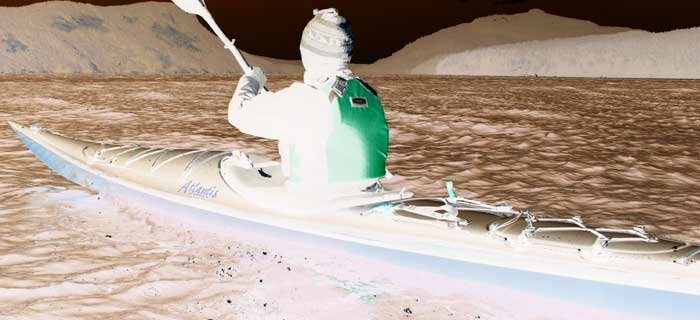
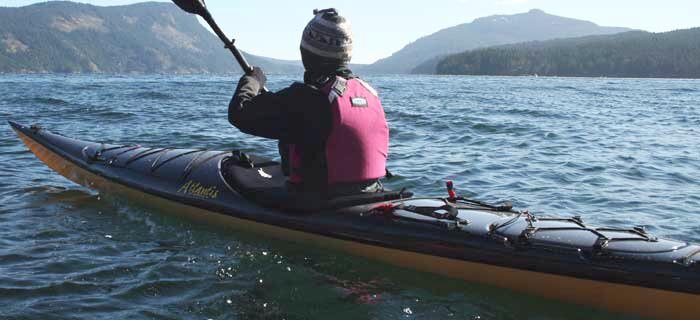
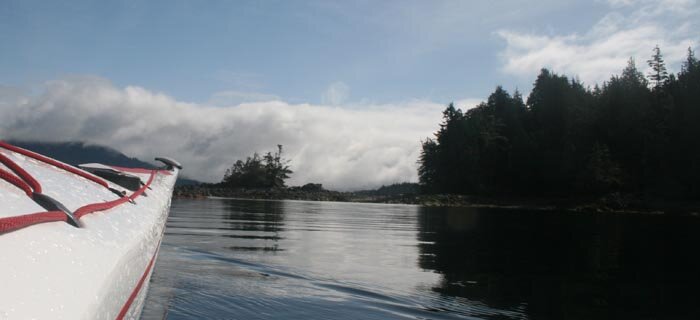
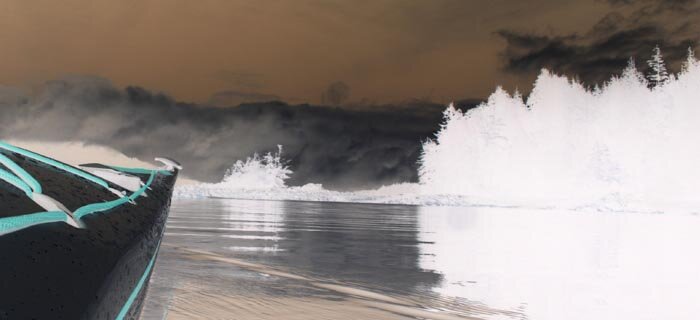
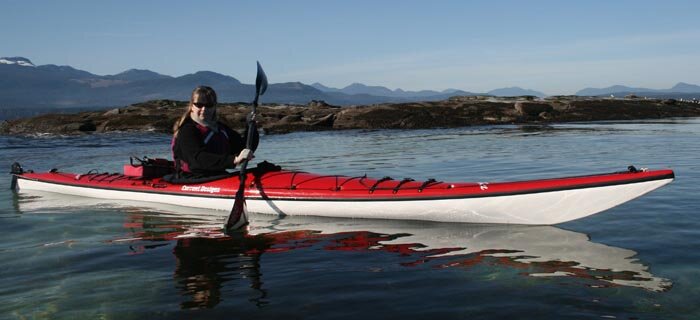

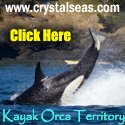
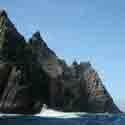













 This site uses valid HTML, CSS and Flash. All content Copyright © 2010 Wild Coast Publishing.
This site uses valid HTML, CSS and Flash. All content Copyright © 2010 Wild Coast Publishing.